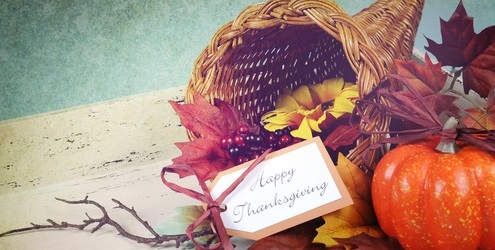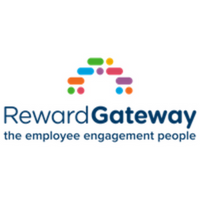How to keep a thank you culture alive 365 days a year

I have fond memories of family and friends crowding into our house to celebrate Thanksgiving with us. We’d spend a lovely day talking and playing games, and when we sat down for the meal we’d always start by going around the table saying what we were thankful for.
I loved this part, hearing the stories of what had happened to everyone over the year, and who had made a difference in their lives. I dreamed of one day being one of the people who was mentioned, doing something so special that I was being thanked in front of this whole group of people.
Replicating a special feeling
It’s this special feeling that I’ve tried to replicate over the years as I’ve put in place recognition programmes. Whether it’s a cash or non-cash award, one sent by a manager or by a peer, the one constant is that they are all celebrations of thankfulness.
Here are some tips that I’ve picked up over the years on how to put in place the best recognition programmes, ones that will really deliver on that special feeling:
1) Figure out your ‘why’
The first place to start with any reward programme is by answering the question ‘why’. Why are you putting it in place and what objectives do you want to achieve?
I strongly believe that if you don’t answer this question then yes you’ll put in a recognition programme, but you won’t put one in that will work effectively at your company. Here are some common objectives for recognition programmes:
- Reward demonstrating company values
- Reinforce certain behaviours
- Increase employee morale
- Drive performance
- Recognise years of service
- Celebrate success
The key to deciding the ‘why’ is to go back to your business and HR objectives, and determine which of the objectives listed above (or any others) will best help you achieve these.
For example, are you trying to create an engaged workforce to meet your growth objectives? If so, then recognising years of service won’t deliver against these objectives, however, rewarding company values and/or reinforcing certain behaviours will.
2) Involve everyone
If you remember my Thanksgiving story I said that we went around the table so that everyone could talk about what they were thankful for. When it comes to recognition it is critical that we do the same thing, give everyone a voice to recognise, and make everyone eligible to receive recognition.
This doesn’t mean that everyone receives the same recognition, but that you think through each part of your recognition programme, determining how best to touch your employees in different ways to meet your different objectives.
A great way to illustrate this is with a recognition pyramid, which I’ve used at various organisations. Here’s an example of how you may design your pyramid:
- Bottom section - this is the widest part of the pyramid, and is the part of your recognition programme which touches the most number of your employees. For example, it could be peer-to-peer eCards, with everyone being able to send and receive for a variety of events and actions at any point in time.
- Middle section - this is where the pyramid gets more narrow, so you’re focusing recognition on a smaller population. For example, it could be quarterly recognition where you give and award to those that are selected for going above and beyond when it comes to certain behaviours or actions.
- Top section - this is the narrowest part of the pyramid, where you are focusing recognition on those in your organisation who have gone above and beyond the most. For example, it could be an annual awards dinner, with recipients being brought together to receive recognition and possibly awards for their achievements.
As with the first tip, you need to develop a recognition pyramid that is right for your organisation. You may have one, two, three or possibly more sections, you decide what will work best to answer the ‘why’ and achieve your objectives.
3) Create a balanced programme
A Thanksgiving meal can only be a success if you have something for everyone. Suzy doesn’t like peas, so make sure you have carrots. Jimmy doesn’t like stuffing, so have potatoes. You get the idea. Well the same is true when it comes to recognition, for there is no one-size-fits all approach to recognition, as employees are motivated and feel appreciated in many different ways.
This is true when it comes to your recognition awards. In a recent survey we asked 1,200 people which they would prefer - cash, a shopping voucher, a Kindle or an experience.
We had 55% women and 45% men answer this question and the results were a mix of responses - 48% said cash, 33% an experience, 15% a shopping voucher and 4% the Kindle. What this says is that it is important to first of all understand what your employees want, and then put in place awards that will best meet their needs.
To end let me say again the importance or recognition. Studies have shown that it can increase engagement, increase productivity, increase retention and increase customer satisfaction. So let’s all get out there and spread the thankfulness… Happy Thanksgiving!
Debra Corey is group reward director at Reward Gateway.
This article was provided by Reward Gateway.
Supplied by REBA Associate Member, Reward Gateway
We help the world's leading companies with an employee engagement platform.







